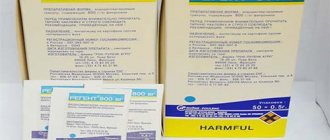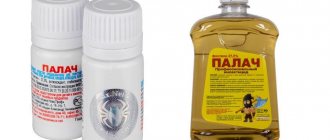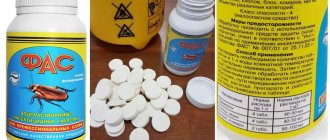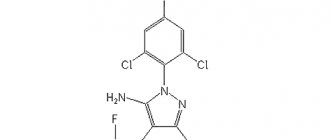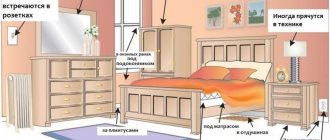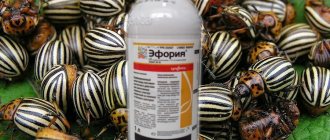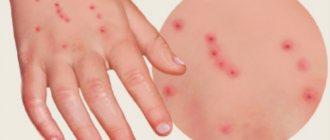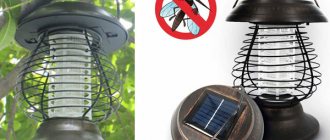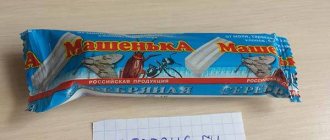The insecticidal agent "Regent" has proven itself very well among effective and affordable means for controlling insects. The main active chemical element of the drug Regent 800 VG is a new generation synthetic insecticide fipronil, this toxic substance has a nerve-paralytic effect on indoor and garden pests.
Insects have not yet developed resistance to fipronil, discovered not so long ago by French chemists. Let's look at the composition of the drug, its features and instructions for use in everyday life and in the garden, and also pay attention to reviews from customers who have tried it in action.
Composition and chemical properties
Regent 800 VDG is one of the most toxic compounds used to control insect pests: 1 kg of the drug contains 800 g of a potent substance - fipronil. That is why the number 800 appears in its name. Additional ingredients are permethrin (15%) and chlorophos (10%).
The regent cannot be mixed with other pesticides that do not have an alkaline reaction.
Fipronil decomposes quickly in soil. Excess of the drug, even when adding granules directly into the soil, spreads to a depth of no more than 30 cm.
Adults and larvae
When dealing with annoying insects, it is worth knowing that moving insects are only part of the problem. In secluded corners there are still a lot of eggs and larvae that will sooner or later become adults. Does Regent 800 against cockroaches work on them? Consumer reviews confirm information from the manufacturer. The drug cannot kill larvae. Therefore, if there are a lot of pests, it is recommended to repeat the treatment after two weeks. Just by this time, adult insects will have time to die, and the offspring will already begin to move, but will not have time to reproduce. That is, even in the most difficult case, the fight will take no more than two weeks.
What pests is Regent effective against?
The contact-intestinal insecticidal preparation has a long period of protective action and is intended to combat a wide range of insect pests. Effective against Orthoptera, Coleoptera and soil-dwelling insects. Regent 800 has a detrimental effect on cockroaches, bed bugs, Colorado potato beetles, mole crickets, leech beetles, bread bugs and locusts.
Using "Regent" on a personal plot
Insecticide "Regent" 800 effectively gets rid of insect pests (Colorado beetle, mole cricket, ants, fleas, bedbugs and others), protecting plantings and cultivated plants.
To protect plants, it is necessary to dilute the product with water at the rate of 5 milliliters of chemical per 10 liters of water. In this case, the solution consumption will be from 5 to 10 liters per 100 square meters.
Spraying of plantings is carried out in calm times and in the absence of precipitation. The optimal temperature range is considered to be +12…+25°C. Disinsection is carried out no later than 30 days before the expected harvest. It is not recommended to mix the insecticide with other chemicals.
Advice
The most optimal time intervals for treating the area with Regent are morning hours (before 10:00) and evening hours (18:00-22:00).
How does Fipronil work as part of Regent 800?
Fipronil has a neuroparalytic effect on pests, that is, it disrupts and blocks the transmission of nerve impulses. This leads to paralysis of all important systems and leads to the death of the insect.
The substance can enter the body of pests through the intestines or when the insect touches an insecticide-treated surface.
In the first case, the drug acts only when the insect eats it. The drug is absorbed into the intestines and, with the help of hemolymph, is distributed throughout the body. Within an hour, the insecticide leads to toxic damage, paralysis of nervous system cells and death of the insect.
The second method is contact, through the legs and chitinous cover of insects. In this case, the insect only needs to touch the surface treated with the chemical, the insecticides will act on the parasite, and it will still die, even if it does not eat the poison. At the same time, when running on surfaces treated with Regent, pests do not die instantly; they come into contact with their relatives and exchange a toxic substance with them. The drug that the pests brought into their nest and infected their fellows with it quickly causes a chain reaction and they die one after another.
This method of infection speeds up the process of destroying pests. Due to the long-term effect of the drug, not only adults die, but also their offspring, which are located in places that are impossible to reach.
Characteristics of the Regent
The Regent insecticide contains the active ingredient fipronil (800 g/kg). This is the first synthesized compound belonging to the chemical class of phenylpyrazoles. Thanks to the active substance, Regent has not only an insecticidal, but also a fungicidal effect.
We recommend similar posts:
Insecticide Ram
Insecticide Clipper
The insecticide comes to the market in packages, each of which contains 48 bottles of 0.1 kg of water-dispersible Regent granules.
Release form and instructions for use
The drug is available in granules and liquid form - in ampoules and vials.
To prepare the solution, granules from the package or concentrated liquid from the ampoule are diluted with warm water. The volume of liquid is calculated individually, based on the approximate number of pests. The less water you take for dilution, the higher the concentration of the solution.
The substance belongs to chemical class 2 poisons and can be dangerous to humans. When working with the drug, you must strictly follow the instructions and observe safety precautions.
For room treatment :
- prepare the room (remove food, plants, remove people, animals, aquarium fish from the room), close windows and doors tightly;
- 5 g of the substance/1 ampoule should be dissolved in 250 ml of water, for preventive treatment - in 1 liter;
- spray the areas where insects are most concentrated with a spray bottle; the room cannot be used for 2 hours;
- After the time has passed, ventilate the room well.
On the garden plot, the rules for using the drug differ:
- the solution is prepared at the rate of 10 liters per 100 square meters of soil;
- It is recommended to treat the area in calm, dry weather, at an air temperature of +12 to +25 degrees;
- The timing of spraying with the drug is tied to the ripening of the fruit, and treatment should not be carried out less than a month before harvest.
One of the important properties of the drug is resistance to moisture. The product can remain on the leaves of plants, maintaining its activity up to 75%, even if it rained half an hour after spraying.
The product should be stored at average temperature, observing the expiration dates indicated on the packaging, away from food and out of the reach of children. The manufacturer guarantees that, subject to storage rules, the drug will retain its quality for two years from the date of production. The prepared solution cannot be stored and must be used immediately.
Against cockroaches and bedbugs
To kill bedbugs and cockroaches, the product is diluted, taking into account the number of pests in the room; the larger the insect population, the more concentrated the solution should be. For the first treatment with a large number of insects, 1 sachet or ampoule of the drug must be mixed in 250 ml of warm water , if the number of pests is small, then in 500 ml. For preventive treatment, the product is diluted in a liter of water. The finished mixture is poured into a container with a spray bottle.
Treat the room by wiping or spraying the solution on the floor, baseboards, and walls. You should remove furniture and household appliances and treat all possible habitats and paths of movement of insects, as well as the underside of mattresses and upholstered furniture. Thorough treatment of cracks and cracks in the walls using a solution that is drawn into a regular syringe will help increase the effectiveness of pest control.
Processing should be carried out with windows and doors tightly closed. The premises cannot be used for several hours. After the time has passed, the room should be thoroughly ventilated.
After treatment, you should wipe the most accessible areas with a soap-salt or soda solution to remove any remaining product and minimize the likelihood of contact with it.
Any detergent should be added to the floor cleaning water to protect people and animals from possible contact with the toxic chemical.
To completely remove cockroaches from the house, you need to re-treat the room after a week, since during this time new individuals will hatch from the eggs. Only through proper processing and cleanliness can you get rid of unwanted six-legged neighbors forever.
Against the Colorado potato beetle and mole cricket
The Colorado potato beetle is more susceptible to chemical elements than the cockroach. Therefore, to treat the above-ground parts of potatoes, the concentration of the product can be reduced and the drug can be diluted in 1-2 liters of water. The prepared solution is sprayed on infected plants. This will help get rid of the striped leaf borer for a month. Treatment should be carried out no more than twice per season in dry, windless weather. The last treatment should be at least 30 days before the potato harvest.
Among garden pests, the mole cricket is particularly voracious. To the delight of summer residents, Regent can also fight such an underground pest.
To do this, make bait based on porridge from barley, rice, oats or wheat. The fresher the bait, the more actively the mole cricket will absorb it. Therefore, there is no need to prepare porridge for future use. Add one ampoule of Regent to the cooked porridge and mix thoroughly. To attract mole crickets, add 2 tablespoons of unrefined “fragrant” sunflower oil to the resulting mixture.
The bait is laid out near the mole cricket burrows or oblong holes several centimeters deep are made in the ground, the porridge is placed in them and sprinkled with earth. It’s better to put a board or piece of plywood on top so that birds don’t get to the poison.
If there is a large population of mole crickets in the area, then watering the area with a solution will be more effective. To do this, one bottle of Regent must be dissolved in 5 liters of water.
Advantages and disadvantages
The main advantages of the Regent insecticide:
- there is no pronounced specific odor;
- able to cope with large numbers of insects;
- economical;
- high efficiency;
- ease of preparation and use of the solution;
- The effect of the drug continues even after spraying: insect larvae will die even after a long time.
Among the disadvantages are:
- Class II toxicity for humans and animals;
- isolation of the room is required for the treatment period;
- Parasites do not die immediately.
Properties of the drug
The use of "Regent" as a chemical for the destruction of the Colorado potato beetle, mole cricket, ants, fleas, bedbugs and other insects reveals the following positive qualities of this drug.
- Impact effectiveness. When prepared properly, the product can control very large insect populations.
- Lack of chemical aggressiveness. The insecticide does not have a pronounced unpleasant odor, and even a highly concentrated solution does not have a detrimental effect on furniture, carpets, and fabrics.
- Economical. The cost of the drug "Regent" is no more than 100-120 rubles.
- Convenience of preparing the solution and its use. Immediately after dilution with water, the product is ready for use.
- Presence of residual effect. 100% of the colony of adult Colorado potato beetles, mole crickets, ants, fleas, bedbugs and other pests die within a few days after application, and the hatched larvae will be neutralized by the drug even after a much longer time. The residual effect will not allow insects to re-occupy the room and area.
The product is produced by the German chemical concern BASF, which has a large number of factories in many countries around the world, including Russia. Domestic analogues of the drug, which also cause paralysis of the nervous system of the Colorado potato beetle, mole cricket, ants, fleas and bedbugs, are “Korado”, “Imidor”, “Image”, “Tanrek”.
AfterText #1
Harmful to people and pets
Since the active element of the insecticide is the toxic chemical fipronil, upon direct contact it can have a harmful effect on people and animals. Therefore, at the stage of preparing the solution and subsequent spraying, special care should be taken to avoid contact with the drug on unprotected areas of the body, as well as on the mucous membranes of the eyes, nose, and mouth. Even after minor contact with a chemical, it is necessary to thoroughly wash the body areas with soap and running water.
Use of "Regent" indoors and precautions
The drug solution is applied using a spray bottle. In this way, the surfaces of the walls and all hard-to-reach places in the apartment are sprayed - the space under the bathroom, cracks, joints between the baseboard and the wall.
After disinfection is completed, the room must be free of people for one hour. The next stage is complete ventilation and washing with a saline solution of all surfaces with which a person may come into contact.
Precautionary measures when using the chemical provided for in the instructions for use:
- protection of eyes and mucous membranes using a respirator;
- carrying out disinsection with protected hands;
- mandatory washing of hands and face after completing all procedures;
- removal of children and pets from the premises during disinfestation.
Advice
A study of reviews of the Regent insecticide shows that using the chemical in the same room with house plants can lead to their death. To avoid this effect, it is necessary to take fresh flowers out onto the balcony or carefully wrap them in plastic wrap.
